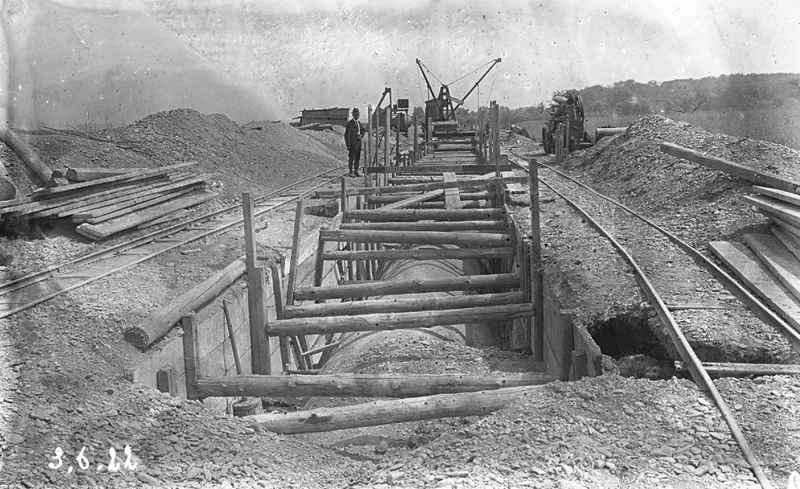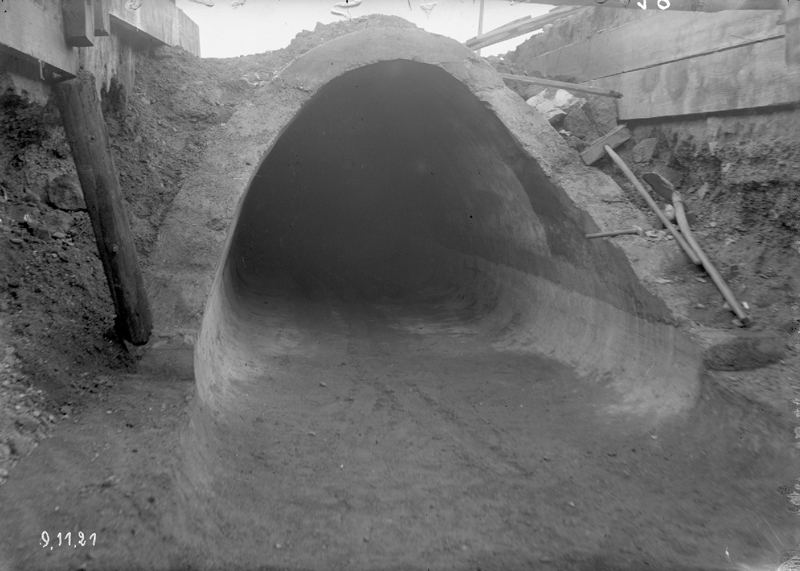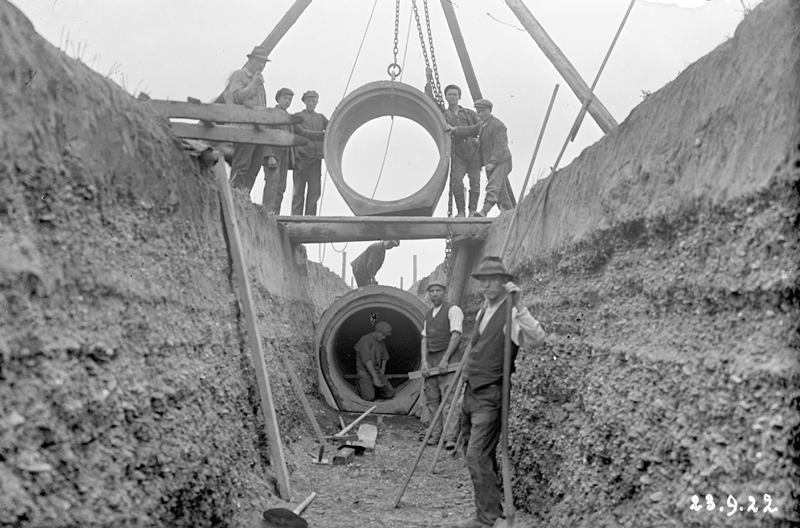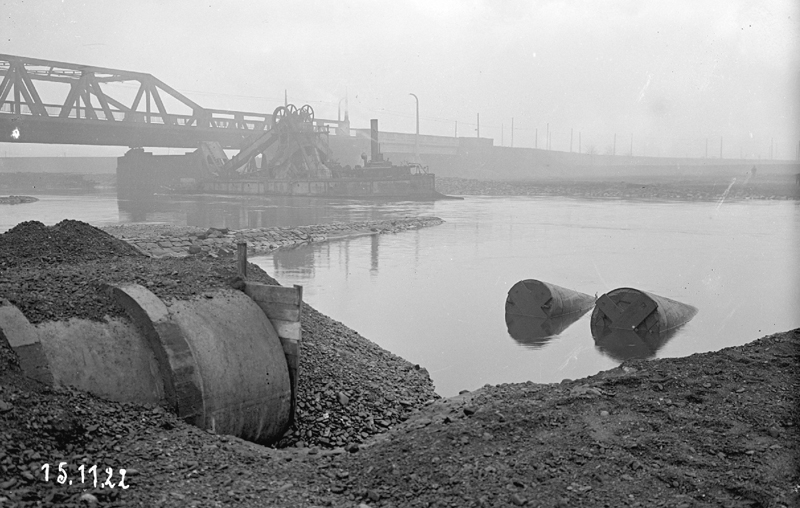Historic development
Even before World War I, the Ruhr estuary with the city of Mülheim and large parts of Oberhausen and Duisburg was one of the most densely populated areas of the Ruhr region due to its high concentration of commercial and industrial companies. Several large waterworks on the lower Ruhr supplied both households and industry with major amounts of potable and non-potable water. At the same time, however, the Ruhr was also used for discharging large amounts of untreated waste water, resulting in serious hygiene problems and even epidemics especially during dry summers. These intolerable conditions led to the foundation of the Ruhrverband in 1913.
Already in 1912, a plan was devised to keep the waste water from the cities of Mülheim, Oberhausen, and Duisburg away from the lower Ruhr. The idea was to build an eleven-kilometre main sewer to the Rhine which was to be followed by a sewage treatment plant in Duisburg-Kaßlerfeld later. Due to World War I, the Ruhrverband did not receive the required permit before 1921. Construction began immediately and under difficult conditions. The main sewer was constructed mainly as a concrete tapering cross-section 2.35 meters wide and 2.30 metres high and took up operation between 1927 and 1929. With the terrain suffering from subsidence due to mining, two pump stations had to be built in Oberhausen to pump the waste water via pressure mains to the connecting sewer.
Around 40 years later, the drainage situation had changed considerably once again: new areas for residential and industrial use had been developed, terrain subsidence had shifted due to ongoing mining, and today’s A 40 autobahn had been built in lowlands, interrupting major canal lines. At the expense of 77 million Deutschmarks, reorganisation took place between 1960 and 1986. Two new pumping stations were built delivering more than 22,000 litres per second; two old pumping stations were refitted; and, in addition to the existing main sewer, a new six-kilometre canal of up to 2.60 metres in diameter was built between Mülheim and Duisburg.












